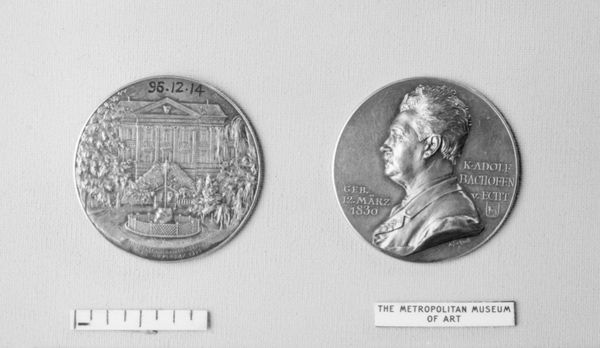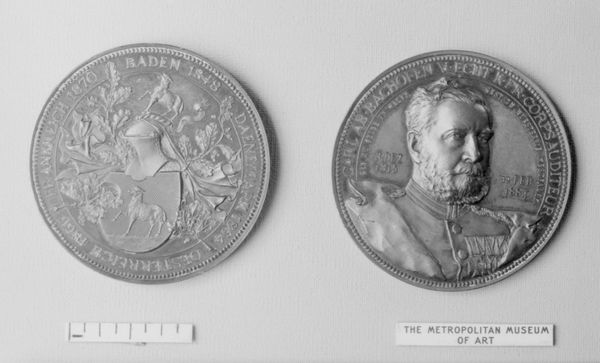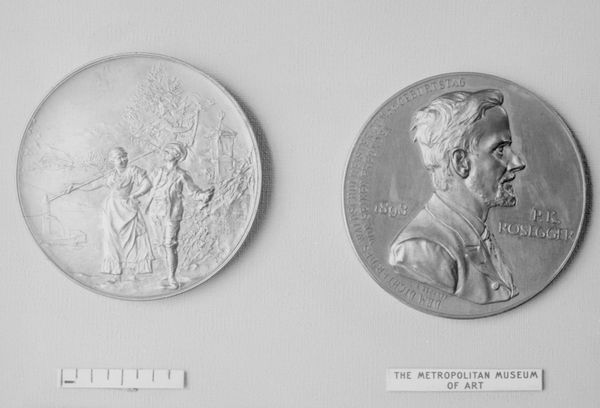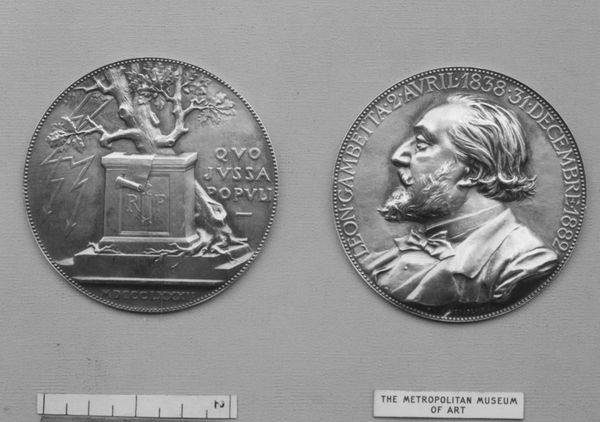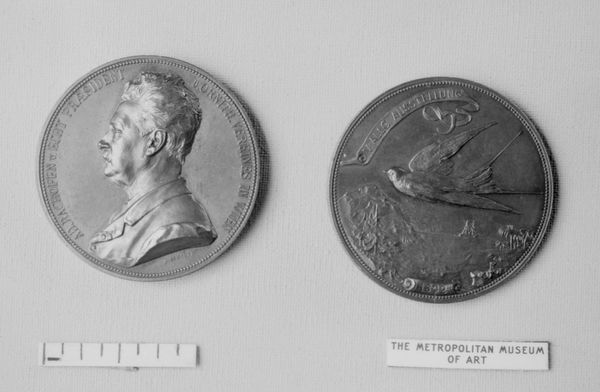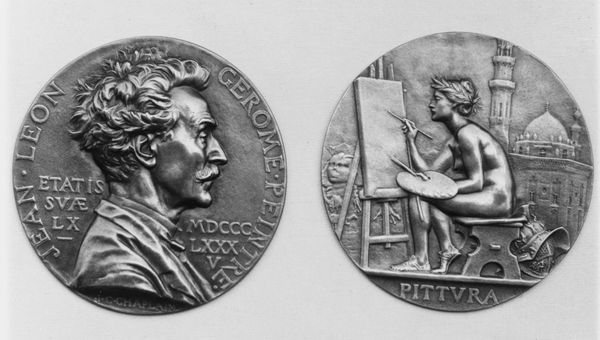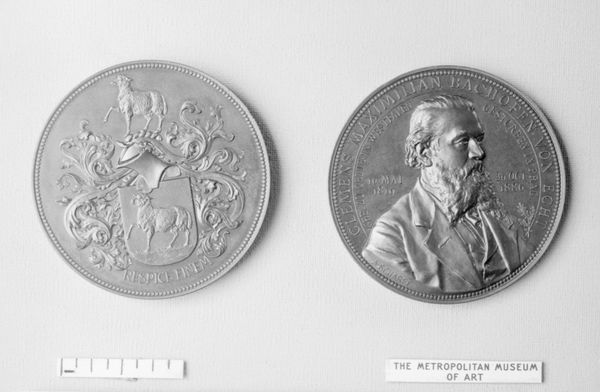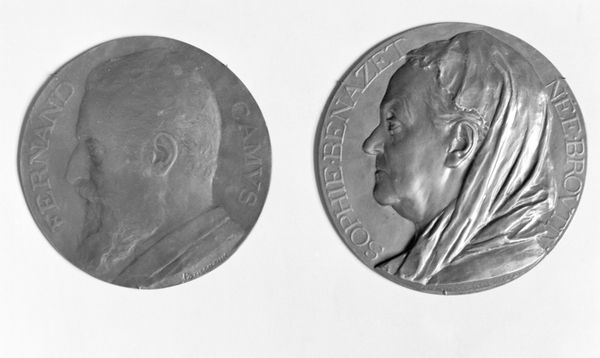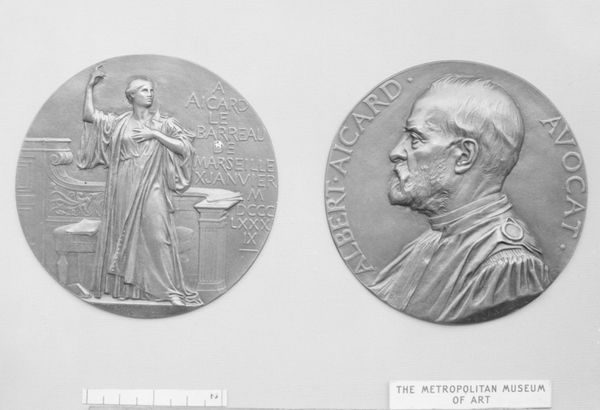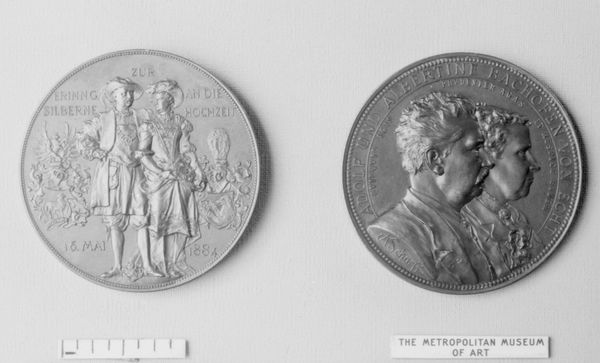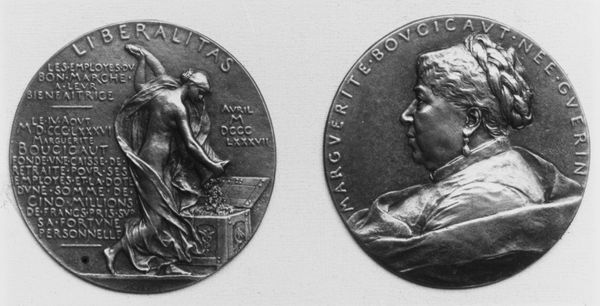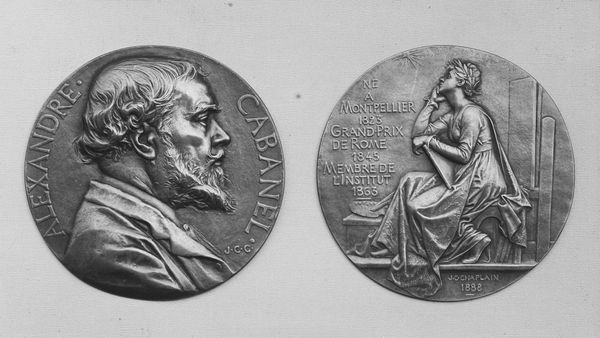
silver, print, metal, relief, bronze, sculpture
#
portrait
#
medal
#
3d sculpting
#
decorative element
#
silver
# print
#
metal
#
sculpture
#
greek-and-roman-art
#
relief
#
bronze
#
sculptural image
#
sculpture
#
decorative-art
#
profile
Dimensions: Diameter: 2 11/16 in. (6.8 cm)
Copyright: Public Domain
Curator: Ah, here we have a fascinating piece from 1886, "In honor of Christakis B. Zografos," crafted by Jules-Clément Chaplain. It's currently held here at the Metropolitan Museum of Art. Editor: It’s struck in silver, right? Immediately, the meticulous detail grabs me, especially the portrait. It's surprisingly intimate for a metal work. Curator: Yes, primarily silver, though bronze has been noted too, perhaps as part of the die creation. It presents two sides: on one, a dignified profile portrait, and on the other, an allegorical scene— a little rustic house being offered leaves by a woman from what seems to be a bountiful olive tree. Editor: Interesting, a humble house presented as a gift. Who was Zografos and what was his material impact to merit a medal? And why combine that with an image so associated with Greek national identity. Curator: Christakis Zografos was a banker and benefactor, particularly known for his support of Greek education. The scene on the reverse likely symbolizes his philanthropic contributions. It reflects a desire to create wealth in Greece and improve quality of life for Greeks, which would align beautifully with that rustic scene's depiction of simple, idyllic Greek life. Editor: That resonates powerfully – Zografos financed education and social welfare. Knowing the history of colonial domination across Greece during the Ottoman era, makes the choice of olive trees deeply profound, considering how those national-cultural symbols would’ve been highly contested and repressed. That level of detail is very thoughtful here. Curator: Indeed, it highlights the context of nationhood being developed and debated in metal. These objects moved about—who crafted them, who controlled the material, and how that affected the nation state? I see the choice of silver not only for its intrinsic value but as a vehicle for spreading a message. Editor: Precisely, these details highlight that such symbolic forms of honor go far beyond decorative gestures. They underscore political statements and cultural hopes. It’s lovely that we can think about his lasting legacy through these objects today. Curator: Yes, precisely. Objects of enduring beauty but created with very real motivations for how it impacts everyday life!
Comments
No comments
Be the first to comment and join the conversation on the ultimate creative platform.
